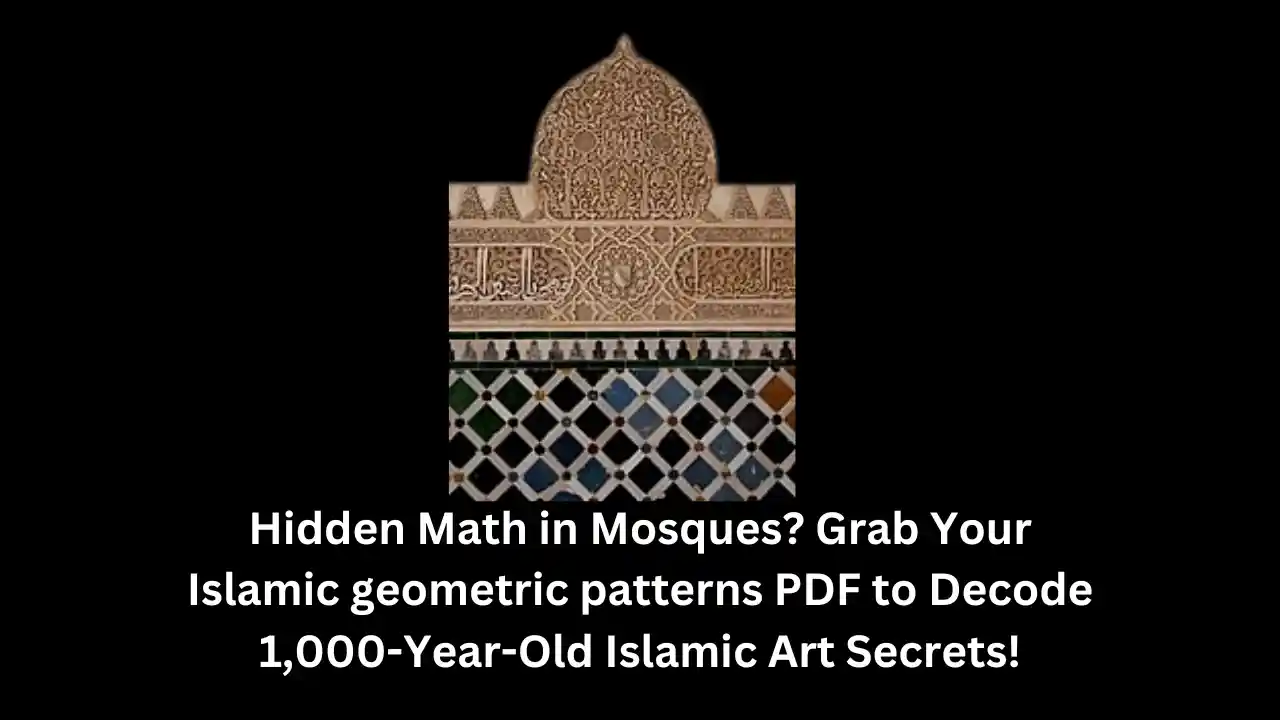You’ve seen those hypnotic, kaleidoscope-like patterns adorning mosques, palaces, and ancient manuscripts—stars, flowers, and interlocking shapes that defy reality. But did you know these designs aren’t just “pretty art”? They’re mathematical masterpieces crafted by Islamic artists centuries ago, hiding spiritual meaning, cosmic harmony, and genius-level geometry. And guess what? You can explore them ALL in a free PDF guide (no PhD required!).
Download
What Are Islamic Geometric Patterns? (Spoiler: It’s Not Just Decor!)
Islamic geometric patterns are a fusion of faith, science, and art. Born during the Islamic Golden Age (8th–14th centuries), these designs follow strict mathematical rules—think symmetry, repetition, and mind-bending tessellations. But here’s the kicker: they’re also deeply symbolic. Circles represent unity (God’s oneness), squares symbolize the physical world, and endless star patterns mirror the infinite nature of creation.
And here’s the coolest part: you don’t need to be a math whiz to “get” them. Artists used simple compasses and straightedge tools to create these cosmic blueprints. Want to try it yourself? Our free PDF breaks down classic patterns step-by-step, like the 8-pointed star (found in Spain’s Alhambra) or the hexagonal tiles of Iran’s Pink Mosque.
Why Grab a PDF Instead of Googling?
Sure, you can scroll through Instagram reels of Islamic art. But a PDF lets you zoom in, print, and geek out over the details most miss:
- The “GOLDEN RATIO” is hidden in arches (yes, the same math behind Mona Lisa’s smile!).
- How a single shape repeats infinitely without overlaps—a metaphor for divine order.
- Color codes: Blue = heaven, green = paradise, gold = enlightenment.
Plus, PDFs are perfect for teachers, artists, or DIYers craving authentic patterns for projects (think wallpaper, pottery, or even tattoo designs!).
The Forbidden Secret Behind These Patterns
Wait—why did Islamic artists avoid human figures? Simple: many believed depicting living beings was idolatry. So instead, they channeled creativity into geometry as worship. Every line and angle was a prayer, a meditation on God’s perfection. Even today, staring at these patterns can feel… spiritual. (Scientists call this the “brain buzz” of fractal symmetry!)
“But How Do I Use These Patterns?”
Glad you asked! Here’s how REAL people are using the PDF:
- Mindfulness coloring: Swap stress for zen by tracing Moroccan motifs.
- Math teachers: Teach geometry using 1,000-year-old “problems.”
- Home decor: Stencil a feature wall that’ll make guests say, “Wait, you designed THAT?!”
Ready to Crack the Code?
Islamic geometric patterns aren’t just history—they’re alive in modern architecture, fashion, and even tech logos. Click below to grab your FREE PDF guide and uncover the genius behind the art that’s literally out of this world.
- Check This Also – Top 50 Islamic Sawal Jawab in Hindi PDF

